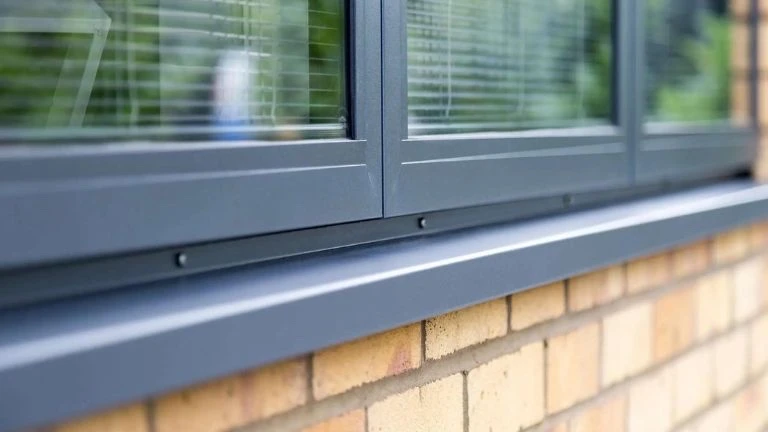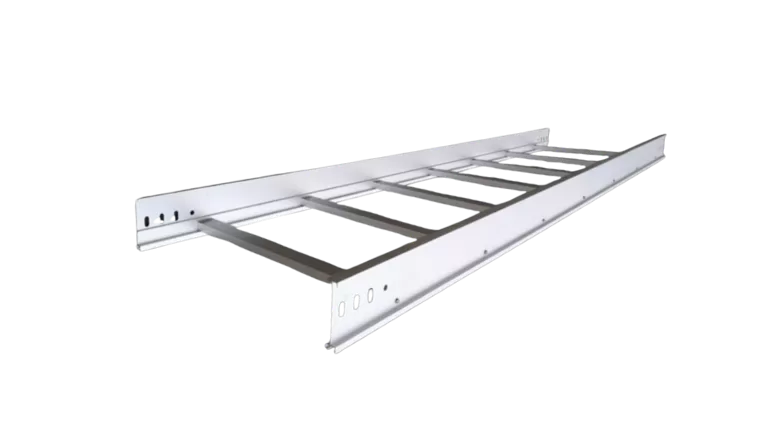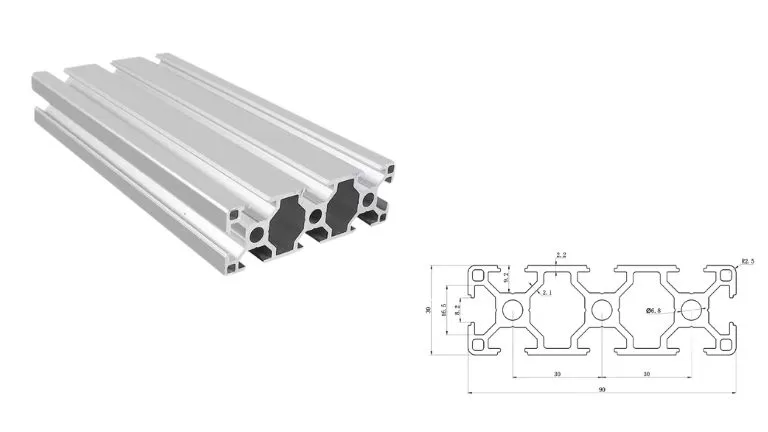Premium Custom Aluminium Cill Profiles by China Leading Manufacturer
Overview of Aluminium Cill Profiles
Aluminium cill profiles are a critical component in the construction and architectural industries, offering a robust and stylish solution for window and door installations. Our custom aluminium cill profiles stand out for their exceptional durability, weather resistance, and low maintenance requirements. Manufactured using high-quality aluminium alloy, these profiles are designed to outperform traditional materials such as wood or PVC, providing a sleek and modern finish that lasts for years. The versatility and adaptability of our extruded alu sections make them a superior choice for any project, distinguishing them from other alternatives in the market.

Applications of Aluminium Cill Profiles
The use of aluminium cill profiles extends across multiple applications, enhancing both functionality and aesthetic appeal:
Enhancing Structures with Aluminium Cill Profiles
Aluminium cill profiles are an integral component in modern construction, offering a blend of durability and sleek design. Used primarily at the base of windows and doors, these profiles provide not only a strong foundation but also contribute to enhanced insulation properties. This helps in reducing energy costs by preventing thermal bridging and water ingress, which can lead to structural damage over time.

Aesthetic and Functional Architectural Elements
Beyond their functional benefits, aluminium cill profiles serve as stylish architectural accents. They can be customized to match the exterior design of buildings, adding a touch of elegance and visual interest. The adaptability of aluminium allows for a variety of finishes, including anodizing, powder coating, and wood grain transfer, ensuring that the cill profiles complement any architectural style.
Reliable Thresholds for Seamless Transitions
In applications where thresholds are necessary, aluminium cill profiles are the go-to solution for creating smooth and effective transitions between different environments. They are engineered to withstand foot traffic and environmental elements, making them a reliable choice for both residential and commercial settings. The strength of aluminium ensures that these profiles maintain their integrity and appearance even under heavy use, providing long-lasting protection and stability.
Custom Your Aluminium Cill Profiles
At HTS Aluminium, we take pride in offering customized extrusion aluminium profile solutions tailored to meet the unique specifications of our clients. Our specialized service is designed to turn your precise architectural designs or sample profiles into reality, with a rapid mold development timeframe of approximately 7 days, ensuring your project maintains momentum.

Aluminium Alloys for Cill Profiles
Aluminium cill profiles demand material that combines strength with malleability, and at HTS Aluminium, we carefully select aluminium alloys that meet these criteria. Commonly used alloys include:
6063 Aluminium Alloy This alloy is a top choice for extrusion projects due to its excellent extrudability, strength, and surface finish. The chemical composition of 6063 includes magnesium and silicon as the primary alloying elements, providing good mechanical properties and heat treatability.
6061 Aluminium Alloy Known for its versatility, 6061 contains magnesium and silicon as well. This alloy offers a balance of strength, corrosion resistance, and weldability, making it suitable for a broad range of applications, including structural components.
6005 Aluminium Alloy With similar but slightly higher strength than 6063, 6005 is used for profiles requiring more robustness. It also offers good extrusion and surface finish qualities, making it another reliable choice for cill profiles.
Each of these alloys can undergo various heat treatments to enhance their properties, such as T5 or T6 temper, which involves cooling from an elevated temperature shaping process followed by artificial aging.


Surface Treatments for Aluminium Cill Profiles
Surface treatments are crucial for aluminium cill profiles, providing both protective and aesthetic enhancements. At HTS Aluminium, we offer a range of options:
Anodizing This electrochemical process forms a durable, corrosion-resistant oxide layer on the surface. It also allows for color customization, giving profiles a visually appealing and long-lasting finish.
Powder Coating A dry powder is electrostatically applied and then cured under heat, creating a skin-like layer. This method offers a wide variety of colors and is known for its resistance to chipping, fading, and wearing.
Painting and Wood Grain Transfer For a more traditional look, painting provides endless color choices, while wood grain transfer achieves a natural wood appearance, combining the beauty of wood with the resilience of aluminium.
Reliable Delivery for Your Custom Profiles
At HTS Aluminium, we understand the importance of deadlines. For a typical 26-ton order, our manufacturing process is streamlined to deliver within an estimated 10-20 days, ensuring your custom aluminium cill profiles arrive when you need them.
Begin Your Custom Aluminium Cill Profile Journey
Unlock the full potential of your architectural projects with HTS Aluminium—your expert in precision extruded aluminium profiles. Don’t settle for standard; insist on custom solutions that reflect your project’s unique vision. Connect with us to leverage our expertise in aluminium extrusion and surface treatments. Start your custom aluminium cill profile with HTS Aluminium today and bring your design to life with precision and elegance. Contact us now to embark on a partnership defined by excellence.
Custom Your Aluminum Profile
Our aluminum extrusion factory, located in Nanchang, Jiangxi Province, covers an extensive area of 30,000 square meters and is home to a dedicated workforce of over 120 skilled individuals.
Advanced Extrusion Lines
Boasting over 30 high-precision extrusion production lines from Japan and Germany, we ensure unmatched quality and efficiency.
Custom Mold Design and Processing
We tailor-make molds based on client designs or samples, providing prototypes for confirmation to meet precise specifications.
Comprehensive Surface Treatment Techniques
Our surface treatment capabilities include anodizing, electroplating, sandblasting, powder coating, fluorocarbon painting, and wood grain transfer printing to enhance product durability and aesthetics.
Over Two Decades of Expertise
Since 2013, we have been manufacturing aluminum profiles, accumulating vast experience in producing a wide array of profiles for windows, doors, and various industrial applications.
Aluminium Profile Solutions
At HTS Aluminium, we pride ourselves on our ability to deliver custom aluminium profile solutions tailored to the unique needs of each client. Our bespoke services are grounded in a deep understanding of our clients’ visions, which we bring to life by transforming drawings or samples into precision-engineered aluminium profiles.

Precision Aluminum Extrusion Process
Our state-of-the-art manufacturing facility is equipped with advanced extrusion presses and precision cutting tools, allowing us to handle even the most complex profiles with exceptional accuracy. Our team of skilled technicians brings years of industry experience to the table, ensuring that every extruded aluminium profile meets the highest standards of quality and precision.

Design and Manufacture of Moulds
We at HTS Aluminium specialize in the design and manufacture of custom moulds based on client specifications. Once a mould is created, we conduct trial productions and send samples to our clients for confirmation. This meticulous process ensures that the final product perfectly aligns with our clients’ expectations.

Material for Extruded Aluminum
Quality begins with the raw materials, and at HTS Aluminium, we use only the highest standard aluminium alloys for our extrusions. Our profiles are commonly crafted from a selection of industry-standard grades, each offering a balance of strength, durability, and corrosion resistance to meet various application requirements.


5052: Offers excellent corrosion resistance, good weldability, and moderate-to-high strength. It is a popular choice for marine and automotive applications.
Silicon (Si): 0.25% (Maximum)
Iron (Fe): 0.40% (Maximum)
Copper (Cu): 0.10% (Maximum)
Manganese (Mn): 0.10% (Maximum)
Magnesium (Mg): 2.2-2.8%
Chromium (Cr): 0.15-0.35%
Zinc (Zn): 0.10% (Maximum)
Remaining Balance: Aluminum (Al)
6061: A versatile alloy with good mechanical properties, weldability, and corrosion resistance. It is widely used for structural applications and in the automotive industry.
Silicon (Si): 0.40-0.80%
Iron (Fe): 0.70% (Maximum)
Copper (Cu): 0.15-0.40%
Manganese (Mn): 0.15% (Maximum)
Magnesium (Mg): 0.8-1.2%
Chromium (Cr): 0.04-0.35%
Zinc (Zn): 0.25% (Maximum)
Titanium (Ti): 0.15% (Maximum)
Remaining Balance: Aluminum (Al)
6063: Often referred to as an architectural alloy, it has a smooth surface finish and is commonly used in window and door frames.
Silicon (Si): 0.20-0.60%
Iron (Fe): 0.35% (Maximum)
Copper (Cu): 0.10% (Maximum)
Manganese (Mn): 0.10% (Maximum)
Magnesium (Mg): 0.45-0.90%
Chromium (Cr): 0.10% (Maximum)
Zinc (Zn): 0.10% (Maximum)
Titanium (Ti): 0.10% (Maximum)
Remaining Balance: Aluminum (Al)
7075: One of the strongest aluminum alloys available, with zinc as the main alloying element. It is used in applications where strength is critical, such as in aerospace and military components.
Zinc (Zn): 5.1-6.1%
Magnesium (Mg): 2.1-2.9%
Copper (Cu): 1.2-2.0%
Chromium (Cr): 0.18-0.28%
Silicon (Si): 0.40% (Maximum)
Iron (Fe): 0.50% (Maximum)
Manganese (Mn): 0.30% (Maximum)
Titanium (Ti): 0.20% (Maximum)
Other elements: Each 0.05% (Maximum), Total 0.15% (Maximum)
Remaining Balance: Aluminum (Al)
Heat Treatment Options
Our aluminium profiles can undergo a range of heat treatment options to enhance their properties. From T5 to T6 treatments, we tailor the process to achieve the desired level of hardness, strength, and elasticity. Each treatment option is designed to bring out the best in the material, ensuring that the final product stands up to the demands of its application.
T5 Heat Treatment
Process: Cooled from an elevated temperature shaping process and then artificially aged.
Characteristics: Increases the strength of the aluminum by accelerating the aging process, resulting in a material that has moderate strength and good formability.
T6 Heat Treatment
Process: Solution heat-treated and then artificially aged.
Characteristics: Provides a significant increase in strength compared to T5 by altering the microstructure of the aluminum. This results in a high-strength material with good machinability and fair formability.
Aluminum Profile Surface Treatment
To ensure the longevity and aesthetic appeal of our telescopic aluminum profiles, we offer a range of surface treatments including:

Anodizing: The Protective Shield
What is Anodizing? Anodizing is an electrochemical process that thickens and toughens the naturally occurring protective oxide on the surface of aluminum profiles. This treatment enhances corrosion resistance and wear resistance, making the aluminum surface harder and more durable.
Key Advantages
Improved corrosion resistance
Enhanced surface hardness
Aesthetic appeal with a variety of color options
Better adhesion for paints and primers
Increased thermal insulation properties
Electroplating: The Metal Finish
What is Electroplating? Electroplating involves the deposition of a metal coating on the extruded aluminum profile. This process can be used to improve corrosion resistance, increase surface hardness, and add a decorative finish.
Key Advantages
Enhanced corrosion resistance
Decorative finishes with various metal types
Increased surface hardness
Improved wear resistance
Sandblasting: The Texture Artist
What is Sandblasting? Sandblasting is a mechanical process where abrasive materials are blasted onto the aluminum surface at high velocity to clean or modify its texture. This is often used to prepare the surface for further treatments or to achieve a specific aesthetic look.
Key Advantages
Uniform surface finish
Improved surface cleanliness
Enhanced paint and coating adhesion
Aesthetic texture options
Powder Coating: The Colorful Protector
What is Powder Coating? Powder coating is a dry finishing process where a powder material is electrostatically applied to the aluminum surface and then cured under heat to form a skin-like coating. This method provides a durable, uniform, and attractive finish.
Key Advantages
Wide range of color options
Uniform, durable finish
Excellent resistance to chipping, scratching, and corrosion
Eco-friendly process with minimal VOC emissions
Fluorocarbon Painting: The Weather Warrior
What is Fluorocarbon Painting? Fluorocarbon painting involves applying a fluorocarbon resin-based paint to the aluminum profile, which offers exceptional weather resistance, making it ideal for outdoor applications.
Key Advantages
Outstanding weather resistance
Excellent color and gloss retention
Resistance to UV radiation and corrosion
Suitable for extreme environmental conditions

Wood Grain Transfer: The Natural Look
What is Wood Grain Transfer? Wood grain transfer is a process where a wood grain pattern is applied to the aluminum profile through heat transfer. This provides the natural appearance of wood while maintaining the benefits of aluminum.
Key Advantages
Aesthetic appeal of natural wood
Durable and maintenance-free
Resistance to corrosion and weathering
Ideal for architectural applications where wood-like finish is desired
Custom Aluminum Extrusion Process
At HTS Aluminum Profiles, we specialize in delivering custom aluminum extrusion solutions tailored to your specific needs. Here’s a step-by-step guide to our customization process:
Step 1: Initial Consultation
Your journey begins with an initial consultation where we discuss your project requirements. We encourage you to share your design concepts, application needs, and any critical parameters that the aluminum profile must meet. This collaborative approach ensures that we fully understand your vision and objectives.
Step 2: Design and Engineering
Leveraging our extensive experience in aluminum extrusion, our skilled engineers work closely with you to refine your design. We consider factors such as the aluminum alloy grade, temper, and mechanical properties required for your application. Our team uses advanced CAD software to create precise technical drawings and 3D models of the proposed profile.
Step 3: Die Fabrication
Once the design is finalized, we proceed to manufacture the custom extrusion dies. Our precision die-making process ensures that the final profile will match your specifications with high accuracy. We employ state-of-the-art CNC machines to craft dies that can withstand the rigors of extrusion while maintaining tight tolerances.
Step 4: Aluminum Extrusion
With the dies ready, the actual extrusion process begins. We select the appropriate aluminum alloy and heat it to the precise extrusion temperature. The heated billet is then pressed through the die to create the custom profile. Our extrusion presses, ranging from 600 to 3600 tons, are capable of producing a wide range of profile sizes and shapes.
Step 5: Surface Treatment and Finishing
Following extrusion, the profiles undergo various surface treatments as per your requirements. Options include anodizing, electroplating, sandblasting, powder coating, fluorocarbon painting, and wood grain transfer printing. These processes enhance the profiles’ durability, corrosion resistance, and aesthetic appeal.
Step 6: Quality Assurance
Quality is at the heart of everything we do. Each custom aluminum profile is subjected to rigorous quality checks to ensure it meets ISO standards and our European quality certifications. We perform dimensional inspections, mechanical testing, and surface finish evaluations to guarantee that your profiles are delivered without defects.
Step 7: Packing and Delivery
After passing all quality inspections, the aluminum profiles are carefully packed to prevent any damage during transit. We use robust packaging materials and methods tailored to the profiles’ dimensions and your delivery preferences. Our logistics team then manages the safe and timely delivery of your custom aluminum profiles to your specified location.
Step 8: After-Sales Support
Our commitment to your satisfaction extends beyond delivery. We offer comprehensive after-sales support to address any concerns or additional requirements you may have. Our customer service team is always ready to assist you with any questions or feedback.
Partner with Us
We are committed to delivering precision-engineered aluminum profiles that meet the highest standards of quality. From initial design to final delivery, we provide a seamless and personalized experience, ensuring that your custom aluminum solutions are produced efficiently and to your satisfaction.
Take the next step in your project and contact us for a consultation on your custom aluminum extrusion needs.












